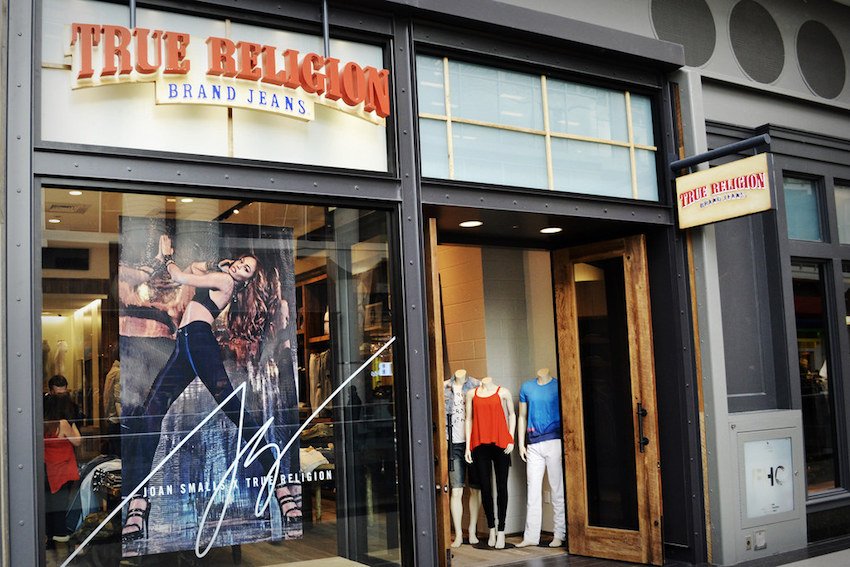True Religion Apparel, Inc. announced Wednesday that it has filed for Chapter 11 bankruptcy reorganization. The company joins a host of fellow California apparel enterprises, including American Apparel Inc., Pacific Sunwear of California Inc., Nasty Gal Inc. and Wet Sea, who have also gone bankrupt.
The outbreak of retail failures comes as consumers continue to shun traditional stores in favor of online shopping. According to a 2016 study by performance marketing firm HookLogic, 63% of shoppers make most of their clothing purchases online. Macy’s, J.C. Penny, Sears, and Payless have all shut the doors of many of their physical retail outlets. Last year, True Religion closed 20 of its “brick-and-mortar” stores.
The reeling fashion giant, which lost $78.5 million last fiscal year despite $369.5 million in revenue, will aim to reduce its debt by selling equity in its new, reorganized operation. Its parent company, Towerbrook Capital Partners, an equity enterprise that bought True Religion off of the public market in 2013 for $835 million, has reached a deal with lenders which would cut the apparel retailer’s debt by about 75%, the LA Times reports.
It could take between three and four months for the bankruptcy court to confirm True Religion’s restructuring plan. If the plan is approved, the company will continue to operate, and will move toward “future growth and success,” Chief Executive John Ermatinger said in a statement. Part of the recovery effort, Ermatinger said, would be to allocate more resources to online operations.
True Religion was established in 2002 and grew exponentially in the late 2000s. From 2007-2012, the company’s size tripled In 2013, the company generated $490 million in revenue, despite online shopping trends which chipped away at sales numbers. Today, it employs 1900 people across 140 proprietary retail stores.
However, high-end clothing companies like True Religion, which prices many of its jeans above $200, have been marginalized by international “fast fashion” stores like Zara and H&M.
H&M’s website claims to offer “fashion and quality at the best price.” The most expensive pair of men’s jeans listed on the site costs just $69.99. A large banner on the homepage advertises a 70% off summer sale.
H&M’s website also invites the customer to “shop in store or online,” and offers next day delivery and free in-store returns of online orders.
The cheapest pair of men’s jeans to be found on True Religion’s site is listed at $159.00, and prices quickly jump above $250 and then over $300.
Consumers’ preference for companies like H&M indicates that fashion trends have become economical.
According to California Fashion Association president Ilse Metcheck, however, many consumers remain willing to spend high dollar on denim. True Religion stores were just “not exciting enough,” Metcheck says, “and [True Religion wasn’t putting enough marketing energy behind their brand to bring them to an aspirational level — that the consumer would aspire to [buy] True Religion.”
In the bankruptcy petition, Ermadinger acknowledges that his company was “… adversely impacted” when it introduced “new product designs… that failed to resonate with the consumer.”
The restructuring agreement, along with $60 million in “post-petition debtor-in-possession (DIP)” from Citizen’s Bank, has given True Religion new life. The fashion market is fickle and consumer tastes are nearly impossible to predict, but if the reorganized company can build its online presence and once again capture the eyes and wallets of consumers, True Religion Apparel could become a household name in the fashion industry once again.
But Metcheck warns that customers are “no longer excited” by “piles of jeans on the table” in a retail store.
“There has to be a look around it,” she says. “Is there an excitement to it that defines the brand?”
If True Apparel wants to reclaim its place at the heart of the fashion industry, it will have to find the exciting X-Factor Metcheck references.
































Comment Template